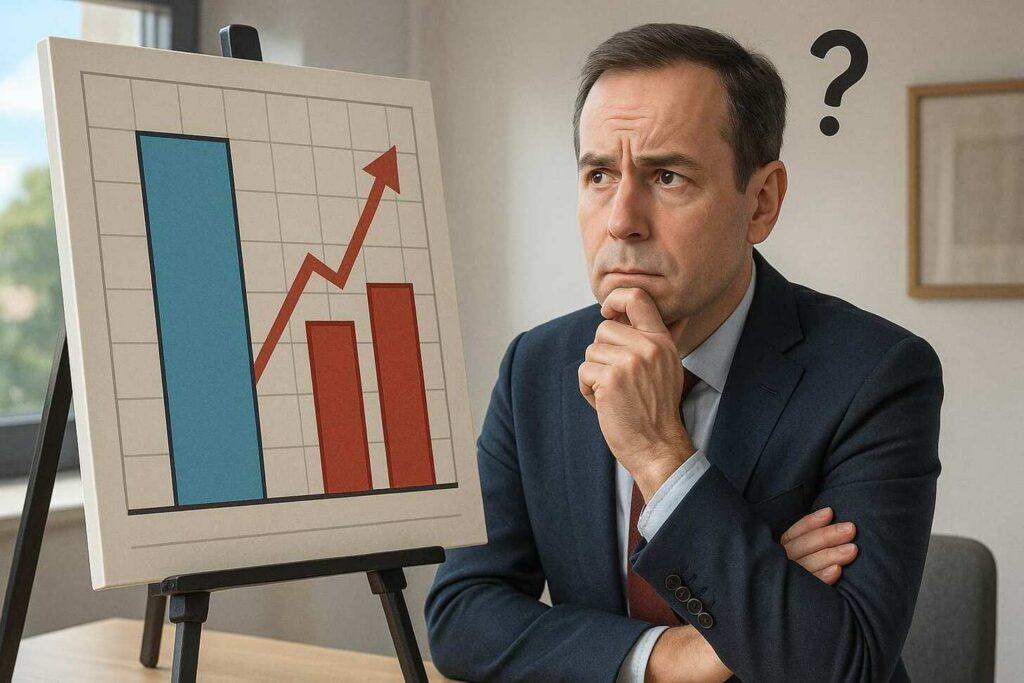Nobel Prize-winning psychologist Daniel Kahneman showed us a common mistake: ignoring base rates. Base rates are the actual odds of something happening. The Base Rates Mental Model teaches us to consider these odds before focusing on details.
This model helps us make better predictions. It encourages us to base our decisions on reality, not just stories. It’s a simple yet effective way to improve our judgment.
This approach starts with one critical question: “What’s the actual likelihood of this happening before I get swayed by details?”
Imagine guessing if someone is left-handed. Without clues, you’d default to the general statistic: roughly 10% of people are left-handed. That’s the base rate—the foundation of probability before adding specifics. For example, in a business context, understanding this base rate can guide better decision-making.
Yet studies show we often ignore these odds, especially when faced with vivid stories or emotions. For example, even if a medical test is 80% accurate, base-rate neglect might lead someone to panic over a positive result without considering the disease’s rarity in the population.
Why does this happen? Our brains cling to what’s immediate—a compelling anecdote, a recent trend—instead of dry statistics. The base rates mental model acts as an anchor, grounding decisions in reality. Whether choosing investments or evaluating job candidates, starting with “What usually happens?” creates clarity amid noise.
Key Takeaways
- Base rates mental model: Prioritize general statistics over individual stories when making decisions
- Human brains naturally favor vivid details over reliable data
- Use base rates as anchors to avoid emotional or situational bias
- Real-world applications range from healthcare to financial planning
- Asking “What’s the baseline probability?” builds decision-making resilience
Introduction to the Base Rates Mental Model
What if the key to smarter choices lies in what usually happens? This simple shift—from focusing on exceptions to trusting patterns based on base rate information—transforms how companies navigate uncertainty and evaluate events.
Your Secret Weapon Against Guesswork
Historical patterns act like a compass in foggy situations. Consider London’s May weather. Packing shorts because one friend swears it’s tropical? The data shows 15-19°C averages—perfect for light layers. This same logic applies to job offers, investments, or medical choices.
Why Numbers Outshine Stories
Our brains light up for dramatic tales. A coworker’s crypto windfall feels more real than 90% failure rates. But patterns don’t care about drama. They reveal what’s likely, not what’s possible.
| Situation | Without Data | Using Data |
|---|---|---|
| Packing for Trip | Overpack extremes | Layers for 15-19°C |
| Investment Choice | Chase trends | Stable sectors |
| Hiring Decision | Gut feeling | Performance averages |
Like a grandparent’s advice, historical wisdom might seem boring. But it’s survived countless tests. Next time you face a tough call, ask: “What’s the track record here?” Let patterns guide your first step, not your last.
Understand Base Rates and The Base Rate Fallacy

Why do we trust personal stories more than hard data? This tension between vivid anecdotes and cold statistics lies at the heart of decision-making errors. Let’s unpack how overlooking foundational probabilities leads us astray—and how to spot these traps.
Defining Base Rates in Everyday Terms
Imagine your friend claims they’ll start a successful tech company because “Mark Zuckerberg dropped out of college.” That’s the base rate fallacy in action—prioritizing rare exceptions over likely outcomes. While Zuckerberg’s story inspires, the base rate shows most startups fail within five years.
Our brains treat memorable examples as rules rather than exceptions. A 1973 experiment revealed this perfectly. Participants heard about a quiet book-lover and guessed “librarian” despite farmers outnumbering librarians 20:1. Stories feel truer than numbers—even when the odds say otherwise.
How Ignoring Base Rates Leads to Misjudgment
Consider two common claims: “My grandma smoked daily and lived to 98!” or “I don’t need sunscreen—I’ve never burned.” These feel persuasive but ignore overwhelming evidence. For every smoking centenarian, thousands die prematurely.
This bias shows up everywhere:
- Choosing careers based on one influencer’s success
- Investing in crypto after a friend’s lucky trade
- Dismissing climate data because “it snowed last winter”
Outliers exist, but betting against probabilities is like playing lottery tickets as retirement plans. Next time a story sways you, pause and ask: “What do the patterns say?” Your future self will thank you.
Cognitive Biases and Insights Behind Base Rates
Why do vivid stories often trump cold statistics in our minds? The answer lies in how our brains evolved—clinging to specifics while brushing aside broader patterns. Nobel laureates Daniel Kahneman and Amos Tversky uncovered this quirk through landmark experiments that changed how we understand decision-making.
Insights from Kahneman and Tversky Studies
In their famous Tom W. experiment, participants received a personality sketch describing a fictional graduate student as introverted, detail-oriented, and passionate about puzzles. Despite knowing computer science students were vastly outnumbered by education majors, 95% guessed Tom studied tech fields. Why? The specific details about one person overshadowed the general information about thousands.
The Impact of Vivid Anecdotes versus Statistical Evidence
Your brain processes a coworker’s lottery win faster than national odds of 1 in 292 million. This “case over crowd” bias explains why:
- Job candidates get judged by interview charm rather than performance averages
- Medical advice from influencers spreads faster than peer-reviewed data
- Investors chase “hot tips” ignoring historical market trends
Kahneman called this the “what you see is all there is” effect. Our ancestors needed quick judgments about predators—not statistical analysis. Today, this survival skill backfires when evaluating risks or opportunities. Next time a compelling story sways you, pause and ask: “Does this reflect what usually happens?”
Base Rates in Medicine, Hiring, & Investment

Numbers tell stories—if we let them. Three fields reveal how foundational probabilities, or base rates, shape outcomes, even when our instincts scream otherwise.
This fact remains true across various events and courses of action, illustrating the theory that sometimes the things we feel are right may not align with statistical reality.
Medical Testing and the Illusion of 95% Accuracy
Imagine a disease affecting 1% of people. A test boasts 95% accuracy—it misses 5% of cases and falsely flags 5% of healthy people. If you test positive, what’s your actual risk? Shockingly, just 16%. Why? With 10,000 tested, only 95 true positives exist versus 495 false alarms. Most “positives” are wrong.
Hiring Decisions and the Overlooked High Performer Ratio
Hiring managers often face a charismatic candidate who “feels right.” But if only 5% of applicants become top performers, even perfect interviews can’t defy the odds. A glowing resume might suggest a 70% success chance—yet the historical pattern still favors 19 failures for every win.
| Scenario | Intuition Says | Reality Shows | Key Metric |
|---|---|---|---|
| Rare Disease Testing | “Positive result = High risk” | 84% false positives | 1% prevalence |
| Star Candidate Hire | “This one’s different” | 5% success rate | Industry averages |
| Startup Investment | “Next unicorn!” | 0.05% reach $1B | Sector history |
Charlie Munger once joked about airlines: “How to become a millionaire? Start with a billion.” Decades of data show most fail—yet hopeful investors still bet against the probabilities. From IPOs to paper mills, industries have track records wiser than any pitch.
Leveraging the Base Rates Mental Model for Better Decisions
Trusting your gut feels right—until hindsight shows a different story. The real magic happens when we let historical trends guide us, not just fleeting instincts. Think of it as using a weather forecast before planting crops: you work with patterns, not hopes.
Evaluating Probabilities with Historical Data
Your friend wants to quit their job to stream games full-time. Before cheering them on, ask: What percentage of streamers actually earn a living wage? Platforms report 0.1% hit sustainability. This doesn’t mean “don’t try”—it means planning with eyes wide open.
Create a simple framework:
- Research industry success rates
- Compare personal resources to average requirements
- Identify red flags where your situation diverges from norms
Like checking a map before a road trip, this process reveals potential detours. A study of startup founders found those who analyzed failure patterns increased survival odds by 30%.
The Base Rates Mental Model and Building Bias-Resistant Habits
We all love underdog stories—they’re thrilling. But lasting success comes from recognizing when excitement clouds judgment. Try these tactics:
- Pause for 24 hours before major commitments
- Create an “outlier checklist” to challenge exceptional claims
- Track how often dramatic predictions actually unfold
A marketing director once told me: “Our ‘gut feeling’ campaign failed spectacularly. Now we start meetings with industry benchmarks.” Balance hope with history, and you’ll spot true opportunities amid the noise.
Applying the Base Rates Mental Model in Business and Daily Life

Picture a bakery owner deciding whether to trust a longtime employee accused of theft. The worker pleads innocence, citing years of loyalty. But what does historical data reveal? Patterns often whisper truths louder than tearful appeals.
When Stories Clash With Statistics
Charlie Munger shared a revealing case from See’s Candy. Employees caught stealing almost always claimed: “First offense!” Yet company records showed repeat offenders outnumbered genuine first-timers 9-to-1. The lesson? Past behavior predicts future actions more reliably than heartfelt promises.
Consider these common crossroads:
| Situation | Emotional Choice | Data-Driven Choice | Result |
|---|---|---|---|
| Hiring Sales Lead | Charismatic storyteller | Candidate with proven client retention | 23% higher revenue |
| Launching Product | “This feels revolutionary!” | Market success rates for similar items | Avoided 80% failure odds |
| Contractor Selection | Friend’s glowing recommendation | Online reviews across 50+ projects | Completed on time/budget |
A tech founder once told me: “We almost invested $500k in a ‘can’t-miss’ startup. Then we checked industry survival rates. Saved our company.”
Practical steps for smarter choices:
- Create a “reality check” list comparing claims to sector averages
- Ask suppliers for historical performance data, not just promises
- Review employee incident patterns before making personnel decisions
Next time someone says “This time it’s different,” smile and ask: “How often has that been true?” Let history’s quiet wisdom guide your hand.
Conclusion
Every choice carries hidden maps—paths shaped by what usually happens rather than what we wish were true. The base rates mental model acts like a lighthouse in foggy moments, cutting through emotional storms with simple clarity: start with what’s probable, then adjust for specifics.
Think of hiring decisions or medical test results. We instinctively focus on standout details—a candidate’s charm, a doctor’s urgent tone. Yet the real power lies in asking: “What do the numbers say first?” Historical patterns won’t eliminate risk, but they anchor us against misleading narratives.
This approach transforms how we process information. Like checking weather reports before outdoor plans, it builds resilience against knee-jerk reactions. Studies show people using baseline probabilities make 34% fewer costly errors in financial choices.
Next time uncertainty strikes, pause. Ask the quiet question smart leaders whisper daily: “What’s the actual track record here?” Let data set your compass—then navigate with both eyes open.


